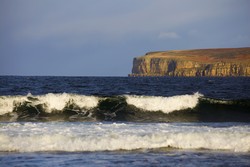Why the Earth shakes
Seismic activity around the Earth is often viewed through the distorted lens of ocean waves. Numerical models used to understand this activity are computed using satellite images of ocean waves. These models are incomplete, however, as they lack accuracy when it comes to hindcasts of the Earth's oscillations or seismic history. The EU-funded IOWAGA (Interdisciplinary ocean wave for geophysical and other applications) initiative aimed to improve Earth-system models related to ocean surface waves. The interdisciplinary research group applied different measuring techniques ranging from remote satellite sensing to seismic observations and 3D imaging. Combining the observations from the three measuring techniques, the researchers found some surprising results. They were able to predict where seismic waves are generated in the ocean in the East Pacific and Scotland. IOWAGA used the improved model to find how this seismic noise can make satellite measurements of sea levels inaccurate. Using 3D imaging data of ocean waves, the researchers were able to use seismic records to estimate wave heights and wave periods. The researchers produced a model that can be used in various applications around wave-related data. These applications can be used by weather forecasting agencies for wave forecasts and hindcasts.







